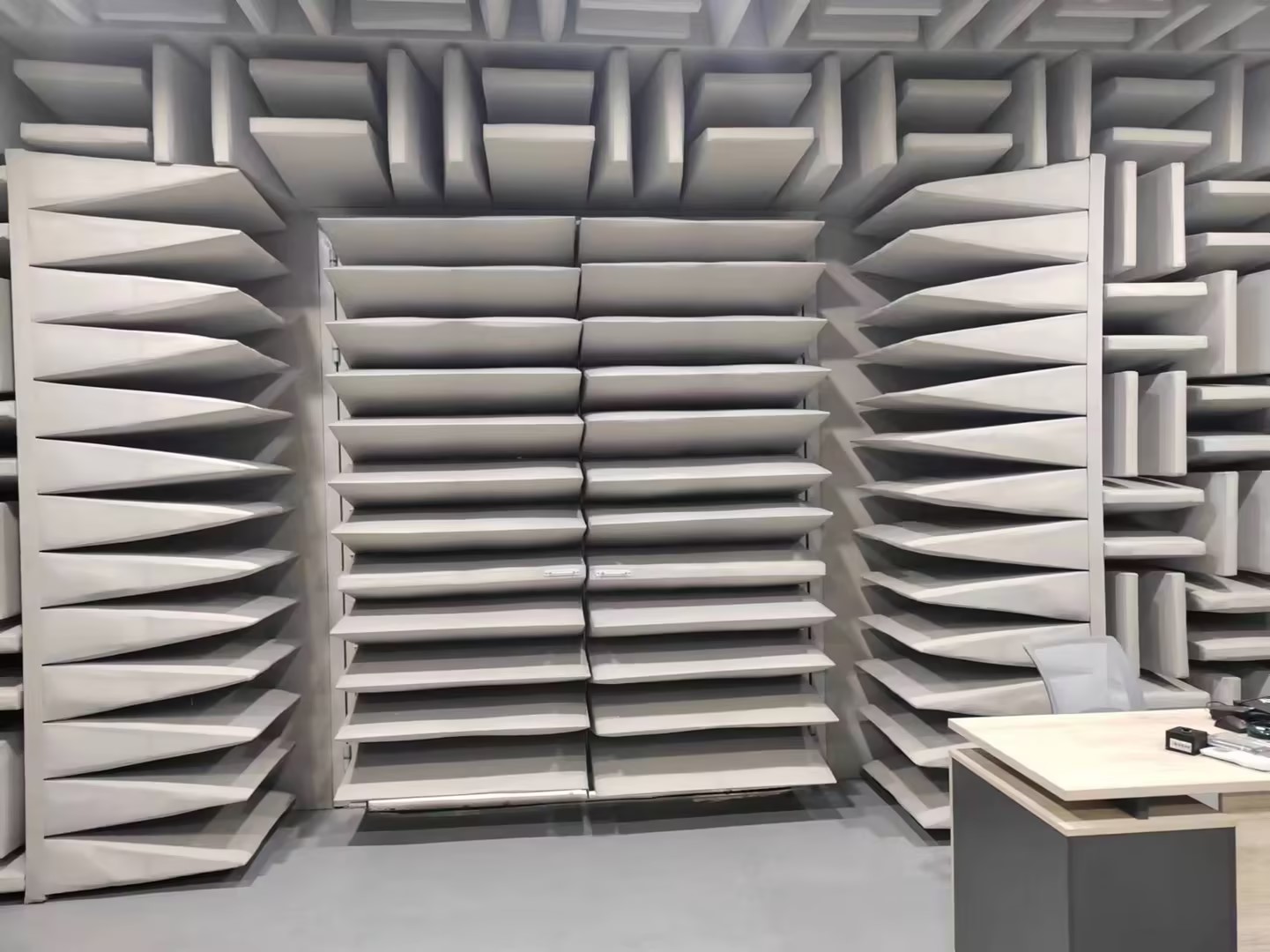The relationship between the wedge length and frequency of the anechoic chamber
An anechoic chamber is a device that simulates a free sound field and is used to reduce noise and sound transmission. It is commonly used in laboratories, factories, audio recording studios and other places. The length of the wedge of the anechoic chamber (also called the length of the sound absorber of the anechoic chamber) has an important impact on its sound absorption effect.
In an anechoic chamber, sound waves will be reflected and attenuated multiple times inside the sound absorber, thereby reducing the propagation of sound. The length of the wedge is an important parameter of the sound absorber in the anechoic chamber, which is closely related to the frequency of the sound wave. Generally speaking, the length of the wedge of the anechoic chamber should conform to the wavelength of the sound wave to achieve the best sound absorption effect.
Specifically, when the frequency of sound waves is lower and the wavelength is longer, the length of the anechoic chamber should also be relatively long in order to absorb and attenuate these low-frequency sound waves. When the frequency of sound waves is higher, the wavelength is shorter. At this time, the length of the anechoic chamber can be relatively short, but it still needs to be long enough to ensure the sound absorption effect.
The lower the frequency, the longer the wedge length of the anechoic chamber. It is necessary to design and adjust the wedge length of the anechoic chamber according to the specific acoustic characteristics and usage requirements to achieve the best sound attenuation effect.

